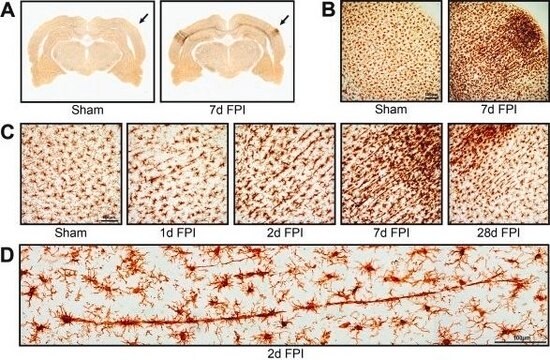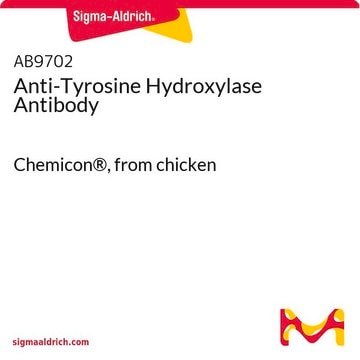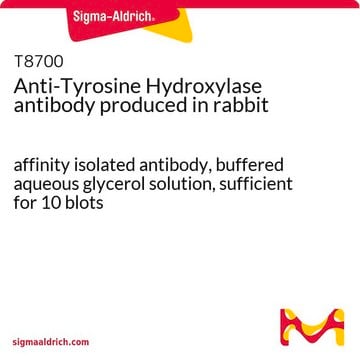MAB5280
Anti-Tyrosine Hydroxylase Antibody, clone 2/40/15
clone 2/40/15, Chemicon®, from mouse
Synonym(s):
TH, Tyrosine Monooxygenase
About This Item
Recommended Products
biological source
mouse
Quality Level
antibody form
purified immunoglobulin
antibody product type
primary antibodies
clone
2/40/15, monoclonal
species reactivity
chicken, bovine, rat, quail
manufacturer/tradename
Chemicon®
technique(s)
immunohistochemistry: suitable
western blot: suitable
isotype
IgG2a
NCBI accession no.
UniProt accession no.
shipped in
wet ice
target post-translational modification
unmodified
Gene Information
rat ... Th(25085)
General description
Specificity
Immunogen
Application
1:100-1:500. A previous lot of this antibody was used in immunohistochemistry.
Western blot:
1:1000-1:2000
Optimal working dilutions must be determined by end user.
Neuroscience
Neurotransmitters & Receptors
Neuronal & Glial Markers
Quality
Western Blot Analysis:
1:1000 dilution of this lot detected Tyrosine Hydroxylase on 10 μg of PC12 lysates.
Target description
Physical form
Storage and Stability
Analysis Note
Positive Control: Brain (sympathetic nerve terminals) and adrenal gland tissue
Legal Information
Disclaimer
Not finding the right product?
Try our Product Selector Tool.
recommended
Storage Class Code
10 - Combustible liquids
WGK
WGK 2
Certificates of Analysis (COA)
Search for Certificates of Analysis (COA) by entering the products Lot/Batch Number. Lot and Batch Numbers can be found on a product’s label following the words ‘Lot’ or ‘Batch’.
Already Own This Product?
Find documentation for the products that you have recently purchased in the Document Library.
Customers Also Viewed
Our team of scientists has experience in all areas of research including Life Science, Material Science, Chemical Synthesis, Chromatography, Analytical and many others.
Contact Technical Service









